The design has seen continuous updating and richness in its method, which will attribute to the influence of modern art, the development of new materials and the advancement of technology. The jewelry materials develop towards a multi-direction. That means, they will not be limited to valuable materials such as precious stones, silver and gold. Recent years, people has been attracted by the application of the color-changing materials in the design of materials. Usually, the color-changing materials refer to the materials that can change color when exposed to certain exterior conditions.
There are four type of color-changing materials based on the stimulation method inflicting on them. They are photochromics; thermochromics; electrochromics; and solvatochromics materials. When designing a jewelry, we mainly employ two color-changing materials, i.e., photochromics and thermochromics materials. We select the two materials for such reasons. First, the materials should induce color change easily with good effect. Second, the materials should not exert bad impact on human body. And last, it should and must change color under certain conditions.
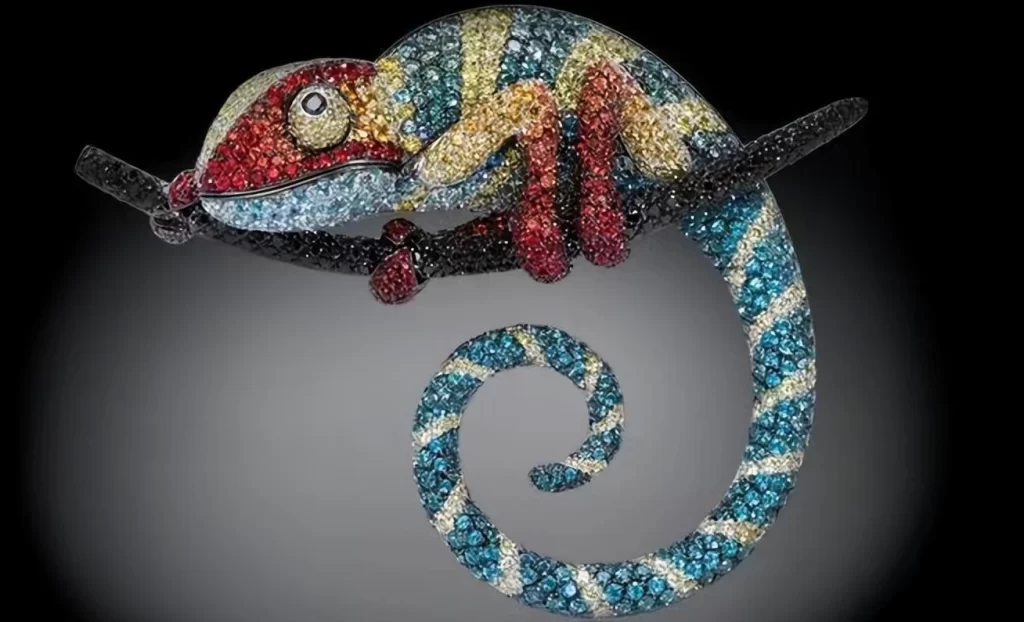
1. Photochromic Pigments in Jewelry
It can, under a thermal treatment or certain wavelength, go back to its original color. However, it will, under another wavelength, gain a different color when triggered by chemical reaction.
This kind of materials are called photochromic pigments as it can generated a reversible change in color when triggered by light.
There are many elements in the photochromic pigments, such as benzoylphenylamine compounds, xanthene derivatives, fulgimides, fulgides, norbornadienes, spirooxazines, stilbene derivatives, silver halides, ect. There are two color-changing dyes materials that are used most extensively. They are spiropyran and spirooxazine. There are three basic elements for photochromic dye compounds with sound performance.
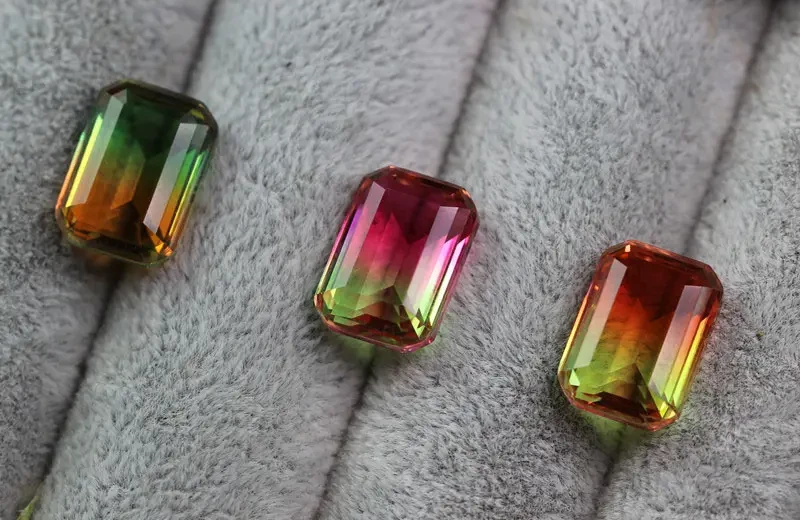
(1) Good sensitivity to light exposure;
(2) Good fatigue-resistance;
(3) Good stability under thermodynamic.
Currently, the thermostability of the color of photochromic materials can be as high as 220-230 degrees Celsius. And there are four colors now, i.e., red, blue, yellow, violet. There are two types of color-altering dyes that can be used in the design of jewelry, i.e., color-changing powders and pastes. These materials can used together with flexible materials, such as PU (polyurethane), TPU (thermoplastic polyurethane elastomer), TPE (thermoplastic elastomer), TPR (thermoplastic rubber), EVA (ethylene-vinyl acetate copolymer), PP (polypropylene), PE (polyethylene), ect. These materials can also be used together with other fluorescent components and extra pigments. The basic shades can be blended with each other to adjust color. This kind of photochromic materials are easy to be distributed easily with high fluidity, stability, good performance.
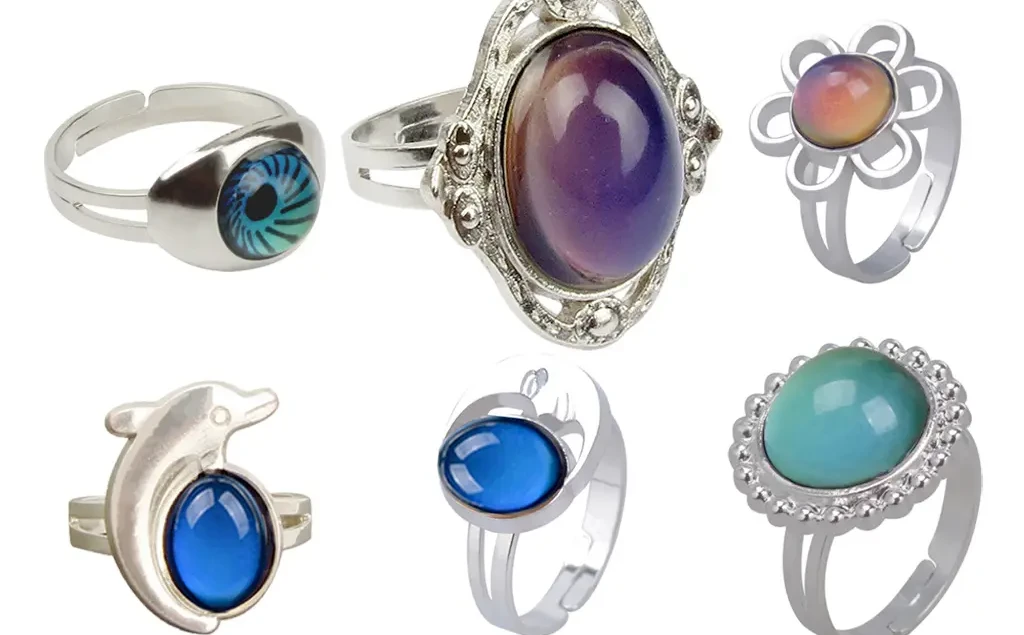
2. Thermochromic Pigments in Jewelry
Thermochromism is a kind of phenomenon when the color of a certain substances can change under different temperatures. There are many reasons that can trigger thermochromism. For example, the substances change structures and crystalline phases of the substances change under different temperatures. There are two types of thermochromic properties, i.e., reversible and irreversible. First, reversible thermochromism. When the temperature of the materials drops down below the certain temperature for changing color, the material will revert back to its original color. However, when the temperature of the materials reach or exceed that certain temperature, the color will change. This process is called reversible thermochromism. Second, irreversible thermochromism. When the temperature rises up and reach the level that can trigger the material to change color, the color changes and won’t revert back to its original color when the temperature drops down. Generally speaking, thermochromic materials is a kind of material that can change along with the change of temperature, and that change belong to reversible change.
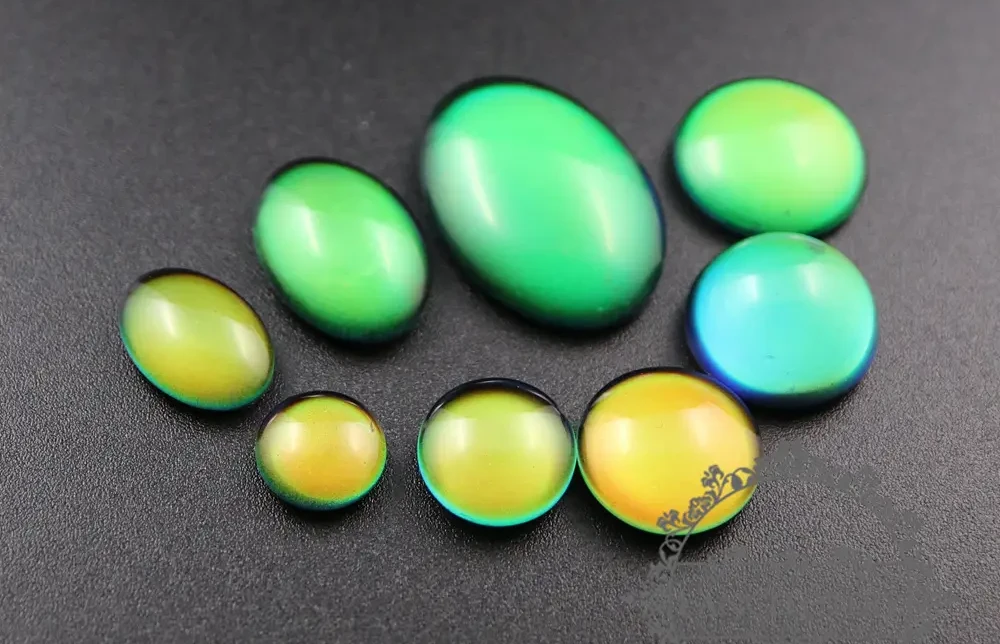
Usually, there are two type of thermochromic materials. The first one consists of three parts, i.e., solvents, acceptors, electron donors. This one is usually for commercial use and usually in the state of thermochromic powders and thermochromic pastes. It will change color when the electron loss or there are new electron. The second is thermosensitive cholesteric liquid crystals. The dye materials that are made by this one is called as cholesteric liquid crystal inks. This kind of material will induce color to change when the molecular aggregation pattern and configurations changes along with the change of temperature. The prerequisite for these two type of thermochromic elements to be used in color-changing jewelry is the technology of microencapsulation. The temperature-responsive color alteration can only be realized when the thermochromic elements are encapsulated in the microencapsulation.
The main liquid crystals of liquid crystal thermochromic inks is a kind of substance phase that is between liquids and solids. Cholesteric liquid crystals is the most commonly used materials in the color-changing jewelries. As long as the temperature changes, the color of this kind of crystal will change. Its temperature fluctuations can be at ±0.2℃. That can explain its strong thermosensitivity.
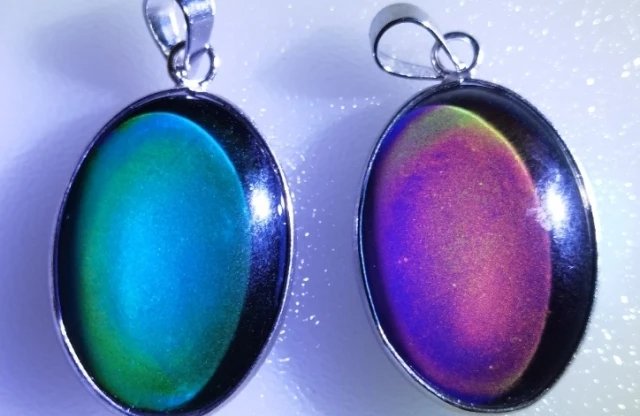
The jewelry can exert a novel visual effect as long as the thermochromic materials are employed in its design. The principle is that when the jewelry are adorned in different parts of the body and when then temperature fluctuates, the color of the jewelry will change along with the change of body temperature. Therefore, we can use cholesteric liquid crystals that can change clor when under certain temperature (equal to human body temperature). This material can be tailored to certain range for temperature change based on customized needs. It can generate continuous color-changing effects. That entails it can generate purple, blue, green, yellow, orange, red colors according to the change of temperature.
Thermochromic powders and pastes are different from the continuous color-changing liquid crystal materials. Under certain temperatures, their colors change from colorful hue to transparent hue, or blended color with underlying color. For example, blue + yellow=green. Once the temperature is 27℃ and this temperature is received by the materials, the color of the materials begins to change. When the temperature rises to 31℃, the color-changing process is over. The underlying color will be present and the original color vanishes. The temperature for thermochromic powders and pastes to change color is around 0~65℃. Under the circumstances that the material should be heated to induce color-change, the temperatures are respectively 38℃, 40℃, 43℃, 45℃, 50℃, 60℃, 65℃. Under the circumstances that the jewelry changes color along with the change of temperature or upon contacting with body temperature, the normal temperature range should be 22℃, 25℃, 31℃, 33℃, 35℃. If we want to produce chilly color-changing jewelries, the temperature range should be 8℃, 12℃, 15℃. The color-changing temperature and the color-matching effect of the thermochromic materials is pivotal to design color-changing jewelry.
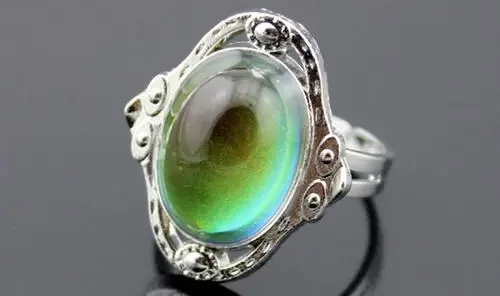
Nowadays, peoples’ understanding of modern jewelry has transcend the range of traditional aesthetics. It is because people’s mindset has changed along with the fusion of multi-cultural development and the development of economic and social development. The traditional concept of aesthetics now can hardly meet people’s changing demand. Today’s jewelry integrates more fun and feeling while exhibiting adornment. With the change of people’s demand and mass aesthetics, jewelries are not only the emblem of social status and wealth. There is an important orientation for design jewelry, that is, placing more emphasis on the demonstration of individuality, care for people and people’s feeling. A designer who wants to design an superior products needs to give more emphasis on the development orientation of the jewelry and make forward deduction. Color-changing jewelries had been employed in the modern design of jewelries. They can be a new development direction for the design of jewelry and can exert important effect in advancing the development of new jewelry.
Read More
10 Key Points When We Use Industrial Pigments
What are pigments’ performance indicators, and how to detect them?



